Are you looking to buy someone else’s Shopify store? Congratulations! This is a great shortcut to start your entrepreneurial journey. But before you get all excited about your new business, you must inspect a few things to avoid any trouble in the future. So, I present to you this handy 10-step Shopify Due Diligence Checklist!
Follow this Shopify Due Diligence Checklist
Running an e-commerce business on the Shopify platform is easy as its interface is so user-friendly. However, if you want to buy an existing Shopify store that someone else has made and managed for years, you must look beyond to see what you are getting into. You must investigate the nitty-gritty of the store to see if it is right for you.
Shopify Due Diligence involves finding and verifying every detail about the store, including its traffic and financial data. It will help you identify areas for improvement and areas that may soon create problems.
I know that as an entrepreneur, you must be busy with many other things. You might be confused about what to check so you don’t miss anything. This checklist can simplify the whole due diligence process, specifically for Shopify store acquisition. It will take some time to complete but I assure you it will be very worthwhile in the end.
1) Where is the Traffic Coming From?
Any online store needs traffic to know how people are discovering it. It can be through Google Search, Google Ads, social media, paid ads, Email Marketing, etc. You can easily find the traffic sources of the store from the in-built Analytics provided by Shopify.
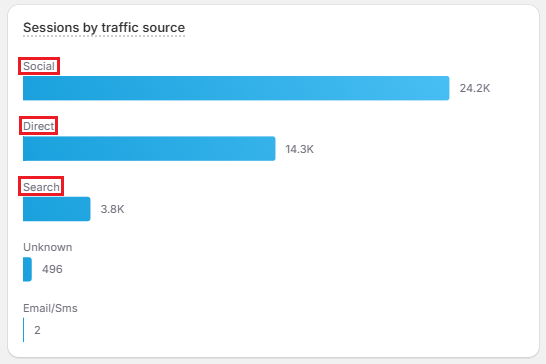
But for an extensive examination, I recommend getting access to the Google Analytics account linked to the store’s website. It will present a detailed picture of where are people coming from.
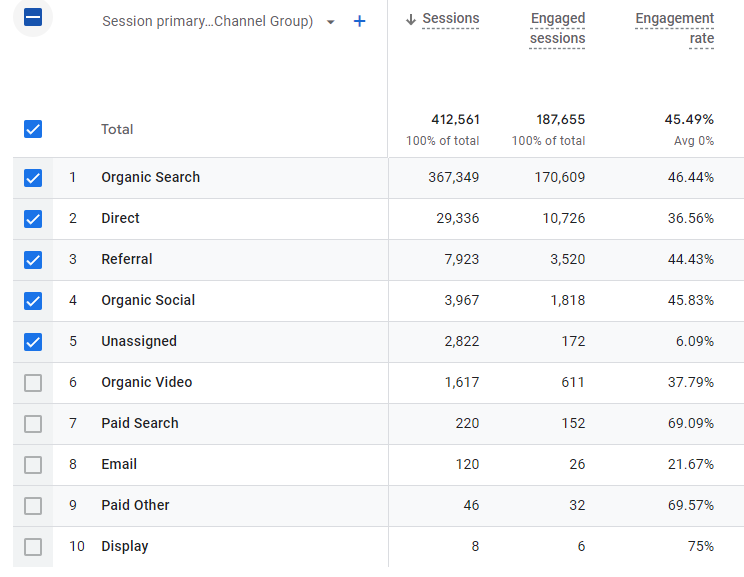
You need to confirm all the traffic data that the seller has mentioned in their listing. Focus on the last 12-month reports and compare them with the previous 12 months as well. While doing this, you can look for the following 3 cases:
- Traffic is mostly through paid channels.
- Most of the traffic (50% or more) is coming from only one channel.
- The traffic is decreasing year-on-year or quarter-on-quarter.
These all are not-so-good signs!
A store with more organic reach and diversified traffic sources is considered best. If the store is dependent on paid ads, then the marketing cost will become a burden soon, or if the store is getting more than half of the traffic from Google Search, then one new update by Google might result in a significant loss.
You must make a rough plan on what new traffic sources you can work on after the takeover. That way, you will know what you can improve to skyrocket the business’ growth. So, spend as much time as possible during this step!
2) Verify Financial Documents
This is an easier step compared to doing a Traffic analysis. Mainly, there are 4 key financial documents a buyer must validate:
- P&L (Profit & Loss) statement
- Balance Sheet
- Cash Flow Statement
- Tax documents
While you can get the store’s sales data from Shopify’s Analytics dashboard, that is very limited. So, verifying official business records is better. Remember that your negotiations with the seller will be solely based on these numbers, so pay your full attention during this step.
The P&L statement is easy to understand while the others might not be. So, I advise hiring a professional or an “expert” friend who can explain all these numbers to you. After everything checks out, then you can go further in-depth.
The biggest red flag is finding that revenue or profit is decreasing. You must figure out the reason behind this decline and what you can do to fix those issues.
The main operational costs of a Shopify store include platform charges, shipping, apps, third-party tools, and marketing. See if any of the above expenditures can be lowered to increase the store’s profits.
Just one more pro tip! During this step, you can also calculate the SDE (Seller’s Discretionary Earnings) of the Shopify Store. It tells us how much money the owner gets in hand after regular operational costs. You can use our Shopify Valuation Calculator to do this in 5 minutes.
3) Ask Why the Owner is selling the store
While doing the due diligence, this is the one thing I have seen most people miss out on. You must ask the current owner why they are selling the Shopify store.
The most common reason why people want to give their store away is that they want to retire or pursue new interests. That’s completely normal but if they mention any challenges they are facing with the business, you should carefully listen to them. Every business has challenges, but you must learn more about what you are getting into.
Ask more follow-up questions to dig deeper. If you think the owner is not giving clear answers, that’s where you need to back off.
Other important questions about the business that you can ask are how’s the employer’s situation? Who are the main competitors? Or will the owner sign a non-compete agreement?
4) Learn About The Operations
When you are satisfied with the previous conversation, you must ask the owner to explain how he manages the operations. This is still necessary even if you have previous experience with managing e-commerce stores. Ask the owner how they acquire the products, list them, market them, ship them, which tools they use, etc.
Each business owner has his or her way of running things. When you know this, you can start the work from day one after the takeover rather than spend time figuring out how things used to work.
5) Examining Product Quality, Return & Suppliers
I have clubbed all 3 tasks in one as they must be done together.
First, you need to try the product yourself to see if it is the same as advertised. You can search for customer reviews on what the customers like, and what they don’t.
Next, find the return rate. If the return rate is higher than the industry, there must be something wrong with the product. Another report you can check is the ‘First-time’ vs ‘Returning’ customers rate:
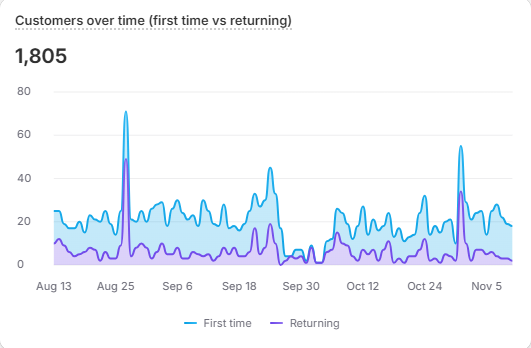
When you are satisfied with it, do a meeting with the supplier and discuss the existing agreements. Specific terms like exclusivity or renewal might need to be updated as you are now the new owner.
6) Technical Details
A website needs a hosting platform, domain, theme, and apps (plugins). All these are technical things that if they cause an issue, they may haunt you later. Shopify is an excellent platform for e-commerce hosting, so the first problem is solved. For others, you need to check:
- Whether the domain belongs to the current owner?
- Is the theme easily customizable?
- Are the plugins/apps (especially for billing or shipping) reliable?
If the answer is YES to all of them, then no need to worry. You can talk to your website designer or manager to assist you in this step.
7) Audit the Content & Social Media Strategy
Expanding on the traffic analysis before step, most online businesses now rely a lot on social media and blogs. While this is not technically part of due diligence, it is better if you do it with it.
For social media strategy, open the main social media accounts of the store like Instagram, Facebook, or X. See if the followers are genuine (and not bots), and whether the posts are getting good engagements (likes and comments).
For content marketing, open the blog section on the website and/or their YouTube channel. You need to see what pieces of content are working among the audience and why.
Young People are more influenced by the content to find new products or research about the brand. According to Hubspot, 26% of consumers prefer to discover new products via social media.
8) Check the SEO & Speed
While social commerce is picking up the pace, the best organic traffic source is still Google Search. When your website is ranking on different keywords that people regularly search for, you get consistent traffic for free. But for that, you have to invest in SEO (Search Engine Optimization).
Most probably, the Shopify store you are going to buy has done some SEO already, so you need to check which keywords they are ranking for. You can ask for the linked Google Search Console account or enter the websites on Ahrefs or SEMRush.
Here are the keywords Jiggy Puzzle’s website is ranking for:
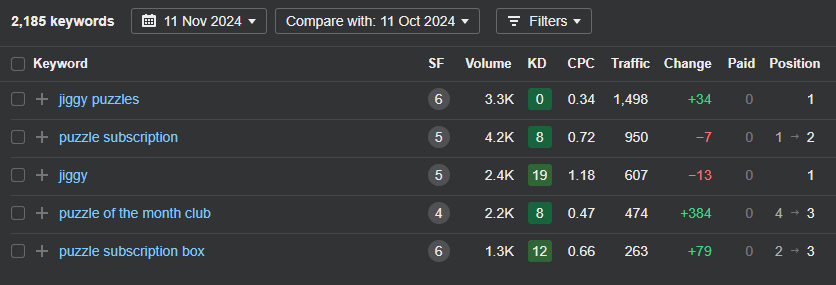
You can see the website is ranking #2 for the keyword: ‘puzzle subscription’, which is their core business.
Related to SEO, your website should also be fast. Google found that 53% of visits are abandoned if a website takes longer than 3 seconds to load.
By the way, there are many more interesting data points that you can find in our E-commerce statistics report for entrepreneurs.
9) Evaluate The Customer Base
You might say that if we have already checked the traffic and marketing channels, why do this? I understand it might look redundant but learning more about your customers is never a bad thing. You can get new insights if you allocate some time to this step.
You can analyze the following information about the customers:
- Customer Acquisition Cost (CAC)
- Customer Lifetime Value (CLV)
- Average Order Value (ALV)
- Customer Demographics (Age, Gender, Country)
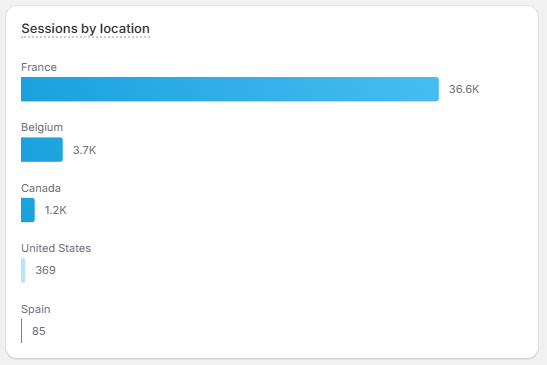
If you are an entrepreneur, then I don’t need to explain these terms. CAC should be lower, while CLV should be higher.
10) Look for Legal Liabilities
Last but not least, keep yourself safe from any legal troubles. Here are the most critical items you must inspect beforehand:
- All Tax Records are neat and clean.
- Trademarks or Copyrights of brand names, logos, and other materials are properly registered.
- Permits & Licenses are up-to-date according to your country or state.
- All IP (Intellectual Property) will be part of the deal.
- No legal cases or penalties are on the company.
And it’s done! You can now move to the negotiations and get the keys to your new Shopify Store.
Get the best price for your business — we take care of the rest.
Start Selling for FreeTakeaways
Now just follow this Shopify due diligence checklist from items 1 to 10 to make an informed decision about your future. I understand that some of these things might look boring but don’t rush it. Complete one step, take a break, and then do the next!





